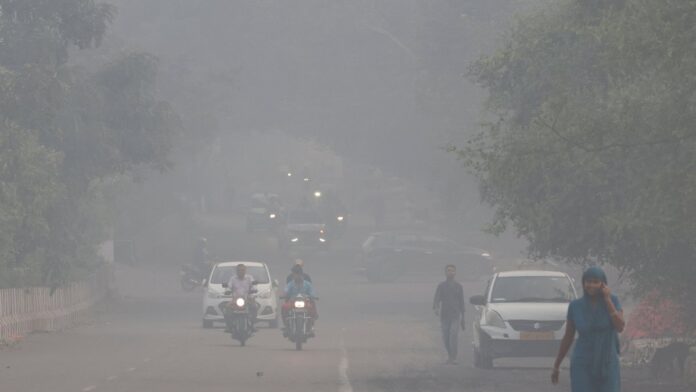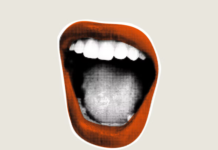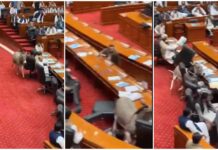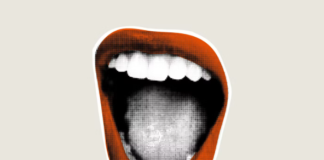India’s capital New Delhi was blanketed in thick toxic smog on Monday as air pollution levels soared to more than 16 times the World Health Organization’s recommended daily limit.
The city, home to more than 30 million people, once again earned the grim distinction of being among the most polluted capitals in the world.
Each winter, cooler air traps pollutants close to the ground, combining with emissions from crop burning, factories, and dense traffic to form a choking haze over the city.
This year, the pollution spike has been made worse by fireworks set off during Diwali celebrations, which culminated on Monday night.
Despite a Supreme Court order allowing only the use of “green firecrackers,” designed to release fewer pollutants, the ban was widely ignored.
By Monday evening, concentrations of PM2.5, microscopic particles that can penetrate deep into the lungs and bloodstream, had reached 248 micrograms per cubic metre in parts of the city, according to the monitoring group IQAir.
The government’s Commission for Air Quality Management warned that conditions are expected to deteriorate further in the coming days.
Officials have urged authorities to ensure an uninterrupted power supply to reduce reliance on diesel generators and are preparing to conduct Delhi’s first cloud-seeding experiment to induce rainfall and clear the air.
“We have everything ready for cloud seeding,” Delhi Environment Minister Manjinder Singh Sirsa said, adding that flight trials and pilot training had already been completed.
A study published in The Lancet Planetary Health last year estimated that nearly 3.8 million deaths in India between 2009 and 2019 were linked to air pollution.
The United Nations children’s agency has also warned that toxic air disproportionately harms children, increasing their risk of respiratory infections and long-term health complications.



















